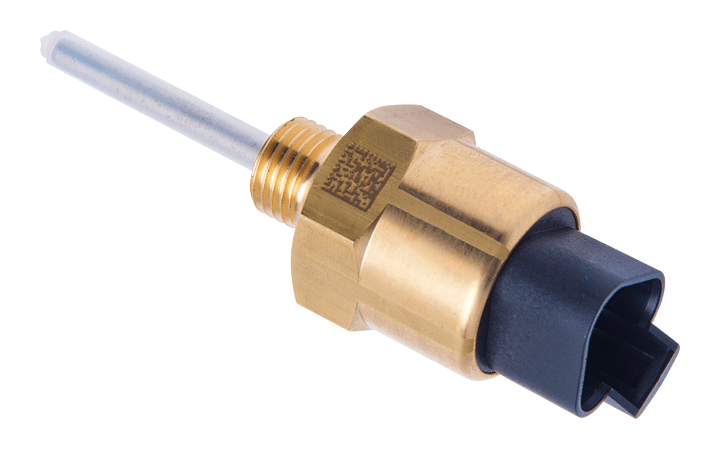CLS40/45 for Heavy Duty applications
BEDIA nivåövervakningssensorer används för att övervaka fyllningsnivåer av vätskor. Sensorerna reagerar när en fyllningsnivå överskrids eller sjunker under en gräns.
Vattenbaserade medier som kylvätskor, AdBlue®, färskvatten, avloppsvatten, kölvatten samt oljebaserade vätskor som motoroljor, hydrauloljor, bränslen och bromsvätskor kan övervakas.
Tack vare deras robusta design, höga IP-skyddsklasser och ett arbetstemperaturområde från -40 °C till +125 °C (-40 °F till +257 °F) används BEDIA övervakningssensorer främst inom följande områden:
- Motorer
- Jordbruksmaskiner
- Byggutrustning
- Hydrauliska kraftöverförningsstyrsystem
- Verktygsfordon
Level Monitoring Sensors CLS 40/45 for Heavy Duty Applications
Areas of Application and Advantages
BEDIA nivåövervakningssensorer används för att övervaka fyllningsnivåer av vätskor. Sensorerna reagerar när en fyllningsnivå överskrids eller sjunker under en gräns.
Vattenbaserade medier som kylvätskor, AdBlue®, färskvatten, avloppsvatten, kölvatten samt oljebaserade vätskor som motoroljor, hydrauloljor, bränslen och bromsvätskor kan övervakas.
Tack vare deras robusta design, höga IP-skyddsklasser och ett arbetstemperaturområde från -40 °C till +125 °C (-40 °F till +257 °F) används BEDIA övervakningssensorer främst inom följande områden:
- Motorer
- Jordbruksmaskiner
- Byggutrustning
- Hydrauliska kraftöverförningsstyrsystem
- Verktygsfordon
Wherever pressure switches or temperature sensors are today used as level monitoring elements, this sensor offers the advantage of indicating a critical condition far earlier:
Temperature sensors frequently react too late, because the medium to be monitored is no longer present. The rise in temperature is not passed on to the pick-up sensor. Pressure switches do not indicate low oil until there is a total shortage of oil and thus too late to protect the engine. The level sensor issues a warning when there is still enough medium present.
BEDIA level monitoring sensors differ from float-type switches in their compact design and their resistance to vibration:
Eftersom de inte innehåller några mekaniska rörliga delar påverkas deras funktion inte av smutspartiklar eller andra yttre faktorer. Ingen elektrisk ström skickas genom mediet via en elektrod med BEDIA sensorer, och elektrolys av mediet är därför inte möjlig.
Operating Principle
The function of the sensor is based on the capacitive principle. It detects the change in capacitance that arises when an electrode surrounded by air is immersed into a liquid medium. This change in capacitance at the electrode of the sensor excites an oscillator, causing it to oscillate (at a frequency of approx. 600 kHz). Then this signal is processed by a microprocessor-based evaluation circuit.
Types of Media
Nivåövervakningssensorerna är utformade för två olika medietyper:
- For electrically conductive liquid mediums
with relative permittivity within a range of εr 35 … 85 (water, coolant, water/glycol mixture) - For electrically non-conductive liquid mediums
with relative permittivity within a range of εr 1.8 … 6 (engine oil, fuels, hydraulic oil)
Available Output Versions
The following output versions are available:
- positive switching
- negative switching
- analog output
- proportional analog output
Automatic Operational Check Time
The sensors have a two-second operational check built in as standard. When the supply voltage is applied (such as ignition being switched on), this signal appears for two seconds, thus signalling readiness to function. If this signal does not appear, the sensor should be checked. This self-monitoring makes it possible to check the level monitoring sensors from a central point for their readiness to function as well as for cable break. Especially in intricate, rambling systems, such as ships, checking conventional level switches is very difficult.
Other function control times are also available upon request.
Fault Indication Delay Time
To avoid indication errors when the swashing surface produces short fluctuations of the liquid level, the output signal is delayed with the standard fault indication delay time time of seven seconds.
Other indication delay times are available upon request.
Mounting Position
BEDIA level monitoring sensors may be installed in any position.
The level sensors must be installed in a damped zone so that the medium does not constantly moisten the level sensor by sloshing and splashing, which would cause error messages. This point is usually applicable for installation in gearboxes or for direct installation in engine oil pans during operation. In such cases, the measurement is only possible at engine shutdown.
It is mandatory to mount the sensor with a minimum distance of 7 mm to the wall.










